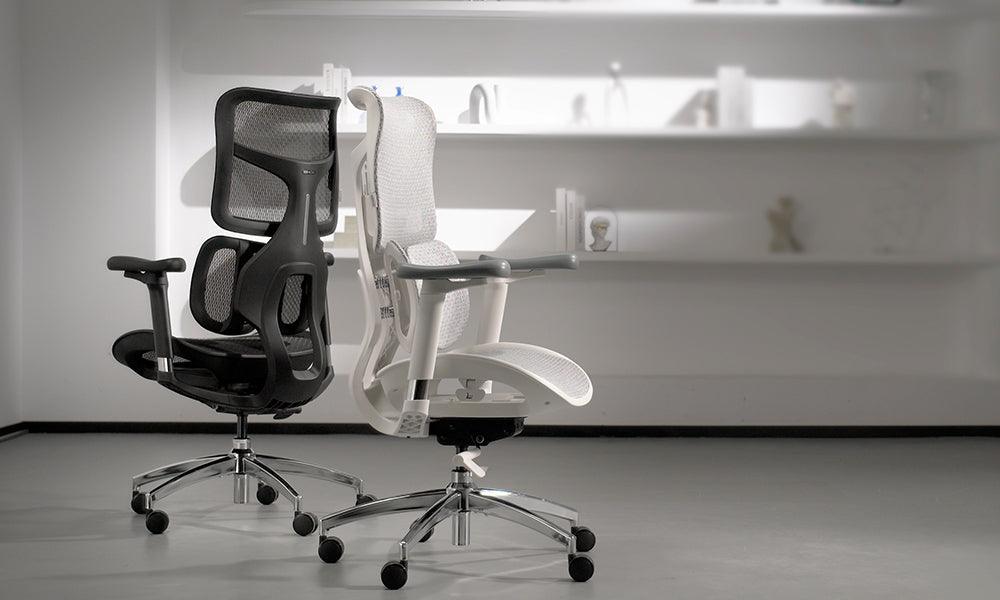Office chairs are essential pieces of furniture in any workplace, providing comfort and support for long hours of sitting. Among the myriad of options available in the market, faux leather office chairs have gained popularity due to their aesthetic appeal and affordability. However, a common concern among consumers is the longevity of faux leather chairs compared to genuine leather or fabric alternatives.
In this comprehensive guide, we delve into the durability of faux leather office chairs, exploring various factors that affect their lifespan and providing practical tips to maximize their longevity.
Understanding Faux Leather:
Faux leather, also known as synthetic leather or vegan leather, is a man-made material designed to mimic the look and feel of genuine leather. It is typically composed of a fabric base, such as polyester or cotton, coated with a layer of polyurethane (PU) or polyvinyl chloride (PVC). This coating gives faux leather its characteristic smooth texture and glossy appearance.
While faux leather may lack the natural properties of genuine leather, such as breathability and aging gracefully over time, it offers several advantages, including affordability, versatility, and ease of maintenance. However, its durability can vary depending on factors such as quality, usage, and care.
Factors Affecting Durability:
Quality of Materials:
The durability of a faux leather office chair largely depends on the quality of materials used in its construction. High-quality faux leather is more resistant to wear and tear, cracking, and peeling, ensuring longevity and aesthetic appeal over time. Conversely, chairs made with low-quality materials may show signs of deterioration sooner, compromising their lifespan.
Construction and Design:
The structural integrity of an office chair plays a crucial role in its durability. Chairs with sturdy frames, reinforced seams, and robust mechanisms are more likely to withstand daily use without succumbing to damage. Additionally, ergonomic design features, such as proper lumbar support and adjustable settings, contribute to both comfort and longevity.
Usage Patterns:
The frequency and intensity of use can significantly impact the lifespan of a faux leather office chair. Chairs subjected to heavy-duty use in a bustling office environment may experience faster wear and tear compared to those used sporadically in a home office setting. Factors such as user weight, movement, and maintenance habits also influence durability.
Environmental Conditions:
Environmental factors, such as temperature, humidity, and exposure to sunlight, can affect the durability of faux leather. Prolonged exposure to direct sunlight may cause the material to fade or deteriorate prematurely. Similarly, fluctuations in humidity levels can lead to cracking or warping of the fabric base over time.
Maintenance and Care:
Proper maintenance is essential for preserving the lifespan of a faux leather office chair. Regular cleaning, using mild soap and water or specialized leather cleaners, helps remove dirt, dust, and stains, preventing them from accumulating and causing damage. Additionally, applying a protective conditioner or sealant can help maintain the suppleness and resilience of the faux leather, prolonging its lifespan.
Practical Tips for Maximizing Longevity:
Invest in Quality:
When purchasing a faux leather office chair, opt for reputable brands known for their commitment to quality and craftsmanship. Inspect the materials and construction details to ensure durability and longevity.
Follow Usage Guidelines:
Adhere to the manufacturer's guidelines regarding weight limits, usage recommendations, and maintenance instructions. Avoid exceeding the chair's weight capacity or subjecting it to excessive strain, which can accelerate wear and tear.
Rotate and Reposition:
Regularly rotate and reposition the chair to distribute weight evenly across different areas, reducing the risk of premature wear on specific spots. This practice helps maintain the chair's structural integrity and appearance over time.
Protect from Environmental Factors:
Place the faux leather office chair away from direct sunlight and sources of heat or moisture to prevent fading, cracking, or warping. Consider using window treatments or protective covers to shield the chair from harsh environmental conditions.
Clean and Condition:
Establish a routine cleaning schedule to remove dirt, dust, and spills promptly. Use gentle cleaning agents and avoid abrasive or harsh chemicals that may damage the faux leather. Periodically apply a leather conditioner or protector to nourish the material and maintain its luster.
Repair and Maintain:
Address minor issues such as loose seams, scratches, or scuffs promptly to prevent them from worsening over time. Keep a repair kit handy for quick fixes and seek professional assistance for more extensive repairs or refurbishments.
Conclusion:
In conclusion, the durability of faux leather office chairs depends on various factors, including the quality of materials, construction, usage patterns, environmental conditions, and maintenance practices. While faux leather may not possess the innate durability of genuine leather, proper care and attention can significantly extend its lifespan and preserve its aesthetic appeal.
By investing in a high-quality faux leather office chair, following usage guidelines, and implementing proactive maintenance strategies, you can enjoy comfort, style, and functionality for years to come. With the right approach, your faux leather office chair can withstand the rigors of daily use and remain a reliable asset in your workspace.



































